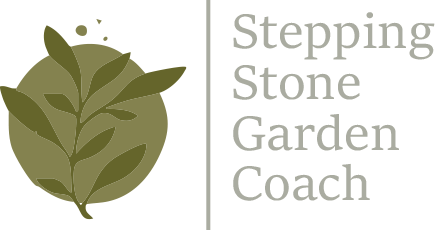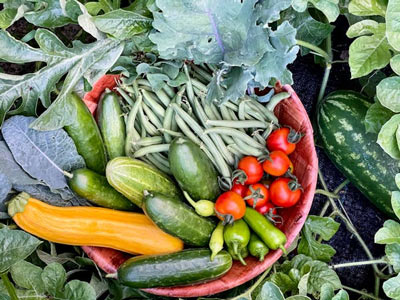Moving from the cool, temperate North to humid, subtropical Central Florida can be a shock—especially for gardeners. Many new Floridians excitedly plant their favorite northern crops, only to watch them wither under the relentless sun or succumb to pests they never had to battle before. If this sounds familiar, don’t worry—you’re not alone!
Let’s explore why so many northern gardeners fail in Florida and, more importantly, how to adapt and thrive in your new tropical paradise.
Florida Has No “Spring” Like You Remember 🌱
Northern gardeners are used to starting seeds indoors in February, planting in May, and enjoying a long, cool growing season before frost. Not in Florida!
🔆 Florida’s growing season is backward—our best vegetable-growing months are fall through early spring, with summer being too hot for most traditional crops.
✅ How to adapt:
- Think in “cool-season” and “hot-season” crops instead of spring and summer.
- Plant tomatoes, peppers, and greens in fall.
- Switch to heat-loving crops (sweet potatoes, okra, roselle) when summer hits.
The Soil Is… Sand. Just Sand. 🏜️
Many northern states have rich, loamy soil full of organic matter. Florida? Mostly sand, with almost no nutrients. It drains fast, compacts easily, and needs serious amendments before growing anything well.
✅ How to adapt:
- Raised beds with high-quality soil work best for new gardeners.
- Add compost, worm castings, and mulch to improve soil structure.
- Avoid synthetic fertilizers that wash away quickly in Florida’s porous soil.
The Pests Are Relentless (And Year-Round!) 🐛🦗
If you thought deer, rabbits, or groundhogs were annoying up north, wait until you meet Florida’s gardening villains:
- Armyworms and cutworms destroy seedlings overnight.
- Hornworms strip tomatoes in a day.
- Fire ants nest in your garden beds.
- Nematodes attack roots, leaving plants weak and stunted.
✅ How to adapt:
- Use floating row covers for seedlings.
- Plant marigolds, onions, and mustard greens to deter nematodes.
- Encourage beneficial insects like ladybugs and lacewings to handle pests naturally.
- Handpick larger pests (yes, hornworms glow under a blacklight at night!).
Summer Is a Killer ☀️🔥
Northern summers are warm, but Florida’s is brutal. With high humidity, frequent downpours, and 100-degree heat indexes, many traditional crops simply melt.
✅ How to adapt:
- Grow tropical perennials like Malabar spinach, Okinawa spinach, and cassava.
- Plant heat-loving herbs like Cuban oregano and lemongrass.
- Use shade cloth over sensitive crops.
- Water deeply in the morning (or risk fungal diseases from evening watering).
Forget the “Plant Once, Harvest All Season” Mentality 🌾
In northern gardens, you plant lettuce, kale, or squash and harvest for months. In Florida? Nope.
🌱 Crops grow fast here—too fast. Many plants bolt, rot, or get taken over by pests before a long harvest is possible.
✅ How to adapt:
- Stagger plantings every few weeks (succession planting).
- Pick heat-resistant varieties of greens.
- Choose fast-maturing crops like bush beans, radishes, and zucchini.
Embrace the Florida Gardening Mindset 🌴
Instead of trying to force a northern garden to survive Florida’s extremes, adapt to what thrives here.
🌟 What to grow instead of your northern favorites:
❌ Lettuce → ✅ Everglades tomato (tiny, heat-resistant tomatoes)
❌ Basil → ✅ Cuban oregano (thicker, drought-tolerant leaves)
❌ Blueberries → ✅ Muscadine grapes (native to Florida, low-maintenance)
❌ Apples → ✅ Loquat trees (small, tropical fruit trees that love Florida’s climate)
Final Thoughts: Don’t Fight Florida—Learn Its Secrets!
Moving to Florida doesn’t mean giving up gardening—it just means learning a whole new set of rules. The key to success is letting go of northern habits and embracing Florida-friendly plants, soil amendments, and season changes.
🌿 Need Help Adapting to Florida Gardening? 🌿
I specialize in helping new Florida gardeners overcome the learning curve. If you want to start your dream garden without frustration, I’d love to help!
📩 Join my waiting list for one-on-one coaching, garden planning, and Florida-friendly plant recommendations.
🔗 www.steppingstonegc.com
Welcome to Florida gardening—where everything grows fast, the seasons are flipped, and nature will humble you if you don’t adapt! 😊 🌱
📅 Florida Planting Guide: What to Grow & When
| Season | Best Vegetables to Grow | Best Herbs to Grow | Special Considerations |
|---|---|---|---|
| Fall (Sept-Nov) 🍂 | Tomatoes, Peppers, Kale, Swiss Chard, Carrots, Radishes | Parsley, Cilantro, Dill, Chives | Prime growing season! Avoid extreme summer heat. |
| Winter (Dec-Feb) ❄️ | Broccoli, Cabbage, Cauliflower, Beets, Lettuce | Thyme, Rosemary, Sage, Lavender | Perfect time for greens & cool-season crops. Few pests! |
| Spring (March-May) 🌸 | Beans, Corn, Cucumbers, Squash, Eggplant | Basil, Mint, Lemon Balm, Oregano | Warm weather begins—plant fast-maturing crops! |
| Summer (June-Aug) ☀️🔥 | Okra, Sweet Potatoes, Roselle, Southern Peas, Malabar Spinach | Lemongrass, Cuban Oregano, Ginger, Turmeric | Too hot for most traditional crops—switch to tropical edibles! |
🌿 Florida Gardening Survival Tips
✅ Use mulch to keep soil cool and retain moisture.
✅ Water early in the morning to avoid fungal diseases.
✅ Plant Florida-native and heat-tolerant crops in summer.
✅ Rotate crops to prevent soil depletion and pests.
🌟 Bonus Tip: If you’re used to spring planting up north, shift your mindset—Florida’s best gardening happens in the fall and winter!

